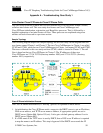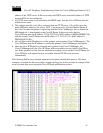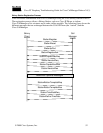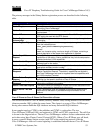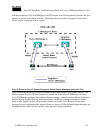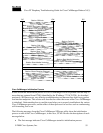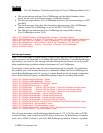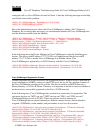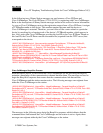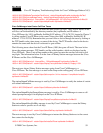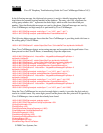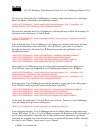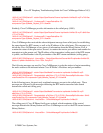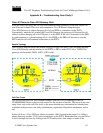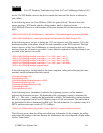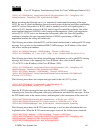
Cisco IP Telephony Troubleshooting Guide for Cisco CallManager Release 3.0(1)
© 2000 Cisco Systems, Inc. 58
In the following trace, Skinny Station messages are sent between a Cisco IP Phone and
Cisco CallManager. The Cisco IP Phone (172.16.70.231) is registering with Cisco CallManager.
Refer to the descriptions of Skinny Station messages earlier in this section for more information.
As soon as Cisco CallManager receives the registration request from a Cisco IP Phone, it assigns
a TCPHandle number to this device. This number remains the same until the device or
Cisco CallManager is restarted. Therefore, you can follow all the events related to a particular
device by searching for or keeping track of the device’s TCPHandle number, which appears in
hex. Also, notice that Cisco CallManager provides the load ID to the Cisco IP Phone. Based on
this load ID, the Cisco IP Phone runs the executable file (acquired from the TFTP server) that
corresponds to the device.
16:02:57.000 CCM|StationInit - New connection accepted. DeviceName=, TCPHandle=0x4fbbc30,
Socket=0x5a4, IPAddr=172.16.70.231, Port=52095, StationD=[0,0,0]
16:02:57.046 CCM|NodeId: 1, EventId: 1703 EventClass: 2 EventInfo: Station Alarm, TCP Handle:
4fbbc30, Text: Name=SEP003094C26105 Load=AJ.30 Parms=Status/IPaddr LastTime=A P1:
2304(900) P2: -414838612(e74610ac)
16:02:57.046 CCM|StationInit - ***** InboundStim - AlarmMessageID tcpHandle=0x4fbbc30
Message="Name=SEP003094C26105 Load=AJ.30 Parms=Status/IPaddr LastTime=A" Parm1=2304
(900) Parm2=-414838612 (e74610ac)
16:02:57.093 CCM|StationInit - Processing StationReg. regCount: 1 DeviceName=SEP003094C26105,
TCPHandle=0x4fbbc30, Socket=0x5a4, IPAddr=172.16.70.231, Port=52095, StationD=[1,85,1]
16:02:57.093 CCM|StationInit - InboundStim - IpPortMessageID: 32715(0x7fcb) tcpHandle=0x4fbbc30
Cisco CallManager KeepAlive Process
Both the station, device, or service and the Cisco CallManager use the following messages to
maintain a knowledge of the communications channel between them. The messages are used to
begin the KeepAlive sequence that ensures that the communications link between the
Cisco CallManager and the station remains active. The following messages can originate from
either the Cisco CallManager or the station.
16:03:02.328 CCM|StationInit - InboundStim - KeepAliveMessage - Forward KeepAlive to StationD.
DeviceName=MTP_nsa-cm2, TCPHandle=0x4fa7dc0, Socket=0x568, IPAddr=172.16.70.229, Port=1556,
StationD=[1,45,1]
16:03:02.328 CCM|StationInit - InboundStim - KeepAliveMessage - Forward KeepAlive to StationD.
DeviceName=CFB_nsa-cm2, TCPHandle=0x4bf8a70, Socket=0x57c, IPAddr=172.16.70.229, Port=1557,
StationD=[1,96,1]
16:03:06.640 CCM|StationInit - InboundStim - KeepAliveMessage - Forward KeepAlive to StationD.
DeviceName=SEP0010EB001720, TCPHandle=0x4fbb150, Socket=0x600, IPAddr=172.16.70.230,
Port=49211, StationD=[1,85,2]
16:03:06.703 CCM|StationInit - InboundStim - KeepAliveMessage - Forward KeepAlive to StationD.
DeviceName=SEP003094C26105, TCPHandle=0x4fbbc30, Socket=0x5a4, IPAddr=172.16.70.231,
Port=52095, StationD=[1,85,1]
The messages in the following trace depict the KeepAlive sequence which indicates that the
communications link between the Cisco CallManager and the station is active. Again, these
messages can originate either by the Cisco CallManager or the station.



